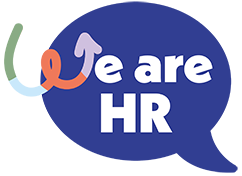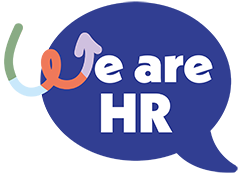Welcome to the HR & CIPD blog section, where we explore the critical aspects of HR and people management. In this comprehensive post, we will delve into the topic of “Behaviours Supporting Equality, Diversity, and Inclusion (EDI) in the Workplace.” As HR professionals, promoting equality, diversity, and inclusion is at the heart of our responsibilities. By fostering an inclusive work environment, we can create a culture that celebrates uniqueness and cultivates success for both individuals and the organization.
Understanding the Importance of Equality, Diversity, and Inclusion
In today’s diverse world, embracing equality, diversity, and inclusion has become more than just a legal requirement; it is a strategic imperative for organizations aiming to thrive in the global marketplace. Equality, Diversity, and Inclusion goes beyond treating everyone equally; it involves recognizing and valuing individual differences and fostering an environment where all employees feel welcome, respected, and included. The benefits of promoting Equality, Diversity, and Inclusion are multifaceted:
- Enhanced Creativity and Innovation: Diverse teams bring a wealth of unique perspectives and experiences, leading to more creative problem-solving and innovative ideas.
- Improved Employee Engagement: When employees feel valued and included, they are more likely to be engaged, motivated, and committed to the organization’s success.
- Attraction and Retention of Top Talent: Companies that prioritize Equality, Diversity, and Inclusion are seen as desirable employers, attracting and retaining a diverse pool of talented individuals.
- Better Decision-Making: Inclusive teams make more informed decisions, as they consider various viewpoints and challenge assumptions.
10 ways of how behaviours support Equality, Diversity, and Inclusion (EDI) in the workplace
1. Cultivating Awareness and Sensitivity
Promoting Equality, Diversity, and Inclusion starts with fostering awareness and sensitivity to the diverse backgrounds, cultures, and identities that exist within the workplace. As HR professionals, we must recognize and address unconscious biases that may influence our decision-making processes. Here’s how you can promote awareness and sensitivity:
- Offer Diversity Training: Provide workshops and training sessions that help employees understand unconscious biases, stereotypes, and cultural differences.
- Encourage Self-Reflection: Encourage employees to reflect on their own biases and assumptions, fostering a culture of continuous learning and growth.
- Lead by Example: As HR leaders, demonstrate inclusive behaviour in your daily interactions and decision-making processes.
Elevate your HR skills by enrolling in CIPD qualification level 5 courses from We-Are-HR. These advanced courses will deepen your understanding of diversity and inclusivity and equip you with the tools to address unconscious biases effectively.
2. Embracing Inclusive Hiring Practices
Building a diverse and inclusive workforce begins with inclusive hiring practices. Traditional recruitment methods may inadvertently perpetuate biases, leading to a lack of diversity in the workplace. To promote Equality, Diversity, and Inclusion in your organization’s hiring process, consider the following strategies:
- Diverse Sourcing: Expand your candidate pool by using diverse sourcing channels, such as industry-specific diversity job boards and partnerships with community organizations.
- Blind Recruitment: Implement blind recruitment practices by removing personal information (e.g., name, gender, age) from resumes and applications to focus solely on skills and qualifications.
- Inclusive Job Descriptions: Use gender-neutral language in job descriptions to appeal to a broader range of applicants and avoid inadvertently excluding certain demographics.
Strengthen your ability to build an inclusive workforce by enrolling in CIPD qualification level 5 courses at We-Are-HR. Learn to develop recruitment strategies that attract diverse talent and uphold the principles of equality and fairness.
3. Promoting Diverse Leadership
Inclusive workplaces not only celebrate diversity at the entry level but also in leadership positions. Diverse leadership teams are essential for creating an inclusive culture and driving the organization’s Equality, Diversity, and Inclusion initiatives forward. Here’s how you can promote diverse leadership:
- Mentorship and Sponsorship Programs: Implement mentorship and sponsorship programs to support and promote underrepresented employees in their career advancement.
- Leadership Development: Offer leadership development programs that focus on fostering inclusive leadership skills, such as empathy, active listening, and cultural intelligence.
- Representation Matters: Ensure diverse representation in leadership positions to inspire employees from all backgrounds and demonstrate the organization’s commitment to Equality, Diversity, and Inclusion.
Aspire to become a strategic HR leader by pursuing CIPD qualification level 7 courses from We-Are-HR. These advanced programs will empower you to champion diversity and inclusion at the leadership level.
4. Creating Inclusive Communication Channels
Effective communication is at the core of an inclusive workplace. Open and transparent communication channels ensure that all employees feel heard, valued, and included. To create inclusive communication channels:
- Seek Feedback: Encourage open feedback from employees on their experiences and perceptions of inclusivity within the organization.
- Employee Resource Groups (ERGs): Establish ERGs that provide a safe space for employees from diverse backgrounds to share ideas, concerns, and perspectives.
- Inclusive Language: Promote the use of inclusive language in all internal and external communications to avoid inadvertently excluding certain groups.
Enhance your communication and interpersonal skills with CIPD qualification level 3 courses from We-Are-HR. Learn to create inclusive communication channels that promote engagement and understanding.
5. Providing Training and Development Opportunities
Investing in training and development opportunities is essential for fostering an inclusive workplace. A diverse workforce requires diverse skill sets and competencies. Here’s how you can provide inclusive training and development:
- Diversity Training: Offer workshops and training programs on Equality, Diversity, and Inclusion topics, including cultural competence, unconscious bias, and cross-cultural communication.
- Inclusive Leadership Development: Develop leadership programs that focus on inclusive leadership behaviours, such as fostering a sense of belonging and empowering diverse teams.
- Diversity Mentoring: Establish mentoring programs that pair diverse employees with experienced mentors to support their professional growth.
Broaden your knowledge and expertise by enrolling in CIPD qualification level 5 courses from We-Are-HR. These courses will equip you with the skills to design and deliver effective diversity and inclusion training programs.
6. Establishing Inclusive Policies and Procedures
HR policies and procedures are the backbone of an inclusive workplace. They set the tone for how the organization values and respects its diverse workforce. To establish inclusive policies and procedures:
- Conduct Policy Audits: Review existing policies to identify any potential biases or barriers to inclusion and make necessary adjustments.
- Flexibility and Work-Life Balance: Offer flexible work arrangements to accommodate diverse needs and promote work-life balance.
- Inclusive Benefits: Ensure that employee benefits, such as parental leave and health coverage, cater to the diverse needs of the workforce.
Strengthen your HR policy development skills with CIPD qualification level 3 courses from We-Are-HR. Gain expertise in creating policies that are fair, inclusive, and compliant with relevant regulations.
7. Nurturing an Inclusive Culture
HR plays a pivotal role in nurturing an inclusive culture that celebrates diversity. Creating an inclusive culture involves fostering a sense of belonging, acceptance, and shared values among all employees. Here’s how you can promote an inclusive culture:
- Employee Resource Groups (ERGs): Support and promote ERGs that represent various demographics, interests, and backgrounds.
- Inclusive Events and Celebrations: Organize inclusive events and celebrations that acknowledge and embrace the diverse cultural, religious, and social backgrounds of employees.
- Zero-Tolerance Policy: Implement a zero-tolerance policy for discrimination, harassment, and bias, ensuring that all employees feel safe and respected.
Learn the art of fostering an inclusive culture with CIPD qualification level 5 courses from We-Are-HR. These courses will help you cultivate a sense of belonging and acceptance for all employees, fostering a workplace where everyone feels valued and included.
8. Measuring and Monitoring Equality, Diversity, and Inclusion Progress
To ensure that Equality, Diversity, and Inclusion efforts are effective and making a positive impact, it is essential to measure and monitor progress regularly. Data-driven insights can inform decision-making and help identify areas for improvement. Here’s how you can measure and monitor Equality, Diversity, and Inclusion progress:
- Set Meaningful Metrics: Establish clear and measurable metrics aligned with your organization’s Equality, Diversity, and Inclusion goals. These could include representation at different levels, employee engagement surveys, and diversity in recruitment.
- Collect and Analyse Data: Gather relevant data through surveys, interviews, and other sources. Analyse the data to identify patterns, trends, and areas of concern.
- Use Data to Drive Change: Use the insights gained from data analysis to inform policies, practices, and initiatives aimed at improving Equality, Diversity, and Inclusion within the organization.
Develop your data analysis and evaluation skills with CIPD qualification level 7 courses from We-Are-HR. Learn to assess and optimize Equality, Diversity, and Inclusion initiatives based on data-driven insights.
Conclusion
Promoting equality, diversity, and inclusion in the workplace is a collective effort that starts with individual behaviours and actions. By embracing inclusive practices, fostering cultural sensitivity, and pursuing CIPD qualifications, HR professionals can lead the charge in creating a truly diverse and inclusive work environment. Take the first step on this transformative journey and make a lasting impact on your career and organization.
Remember, a workplace that values Equality, Diversity, and Inclusion is not only the right thing to do ethically, but it is also a pathway to driving innovation, productivity, and success for everyone involved. Let’s champion diversity and inclusion together and build workplaces where everyone thrives. Enrol in CIPD qualification courses at We-Are-HR and unlock your potential to create positive change in the workplace. Together, we can shape a better future for all.


